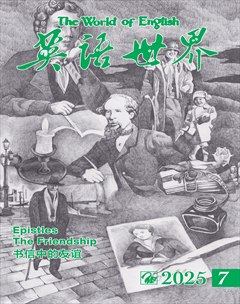燕山深处有一段铁路,春天,列车和满山遍野的鲜花总会在这里相约2。在这里,列车驶入一座百年老站——青龙桥车站,在“人”字形铁路3车头变车尾后,再缓缓驶离。百年京张铁路著名的“人”字线和京张高铁在这里组成一个“大”字4,见证着中国铁路翻天覆地的变化。
Deep in the Yanshan Mountains there is a section of railway. In spring, the line is bedecked with mountain flowers. Here, the train arrives at a centennial station—Qinglongqiao Station—and after the locomotive switches to the rear of the train on the V-shaped track, it takes its slow departure. Now a new track—Beijing-Zhangjiakou high-speed rail meets the V-shaped track here. Together they form a new Chinese character “大” (big), which is a testament to the earth-shaking development of China’s railways.
青龙桥车站始建于1908年,坐落在青山和长城怀抱之中。青灰色的古朴外墙,古老的油灯座、百叶窗,仍保留原貌,具有明显的上世纪西洋风格,而这座站房最出名的便是——“人”字形线路。
Construction work started on Qinglongqiao Station in 1908 under the shade of the green mountains and the Great Wall. Its darkish exterior wall of primitive simplicity, old lamp holders, and window shades still retain their original look, with obvious Western influences from the period.
“人”字形线路建成至今已有110年的历史,最经典的一段就在青龙桥。
The most classic section of the V-shaped tracks is at Qinglong Bridge.
青龙桥火车站站长杨存信介绍,八达岭隧道长1091米,如果没有“人”字形线路,距离要延长一倍。当时由于经费有限,只使用了一个火车头,上山的时候推进运行,下山的时候牵引运行;新中国成立之后才改用两个火车头,前后牵引推进,这样火车可以装载更多的人员和货物。但是以当时的工程建筑水平,隧洞与“人”字形铁路相结合,那真是令人叹为观止。
Yang Cunxin, manager of the station, told us that the length of the Badaling Tunnel would have doubled without the V-shaped tracks. At that time, due to limited funds, only one locomotive was used. The train was pushed uphill and dragged downhill. After the PRC was founded, two locomotives were used to propel and drag so the train could carry more passengers and cargo.
“人”字形铁路站房旁便是詹天佑铜像,铜像下方镌刻着“詹公天佑之象”。





